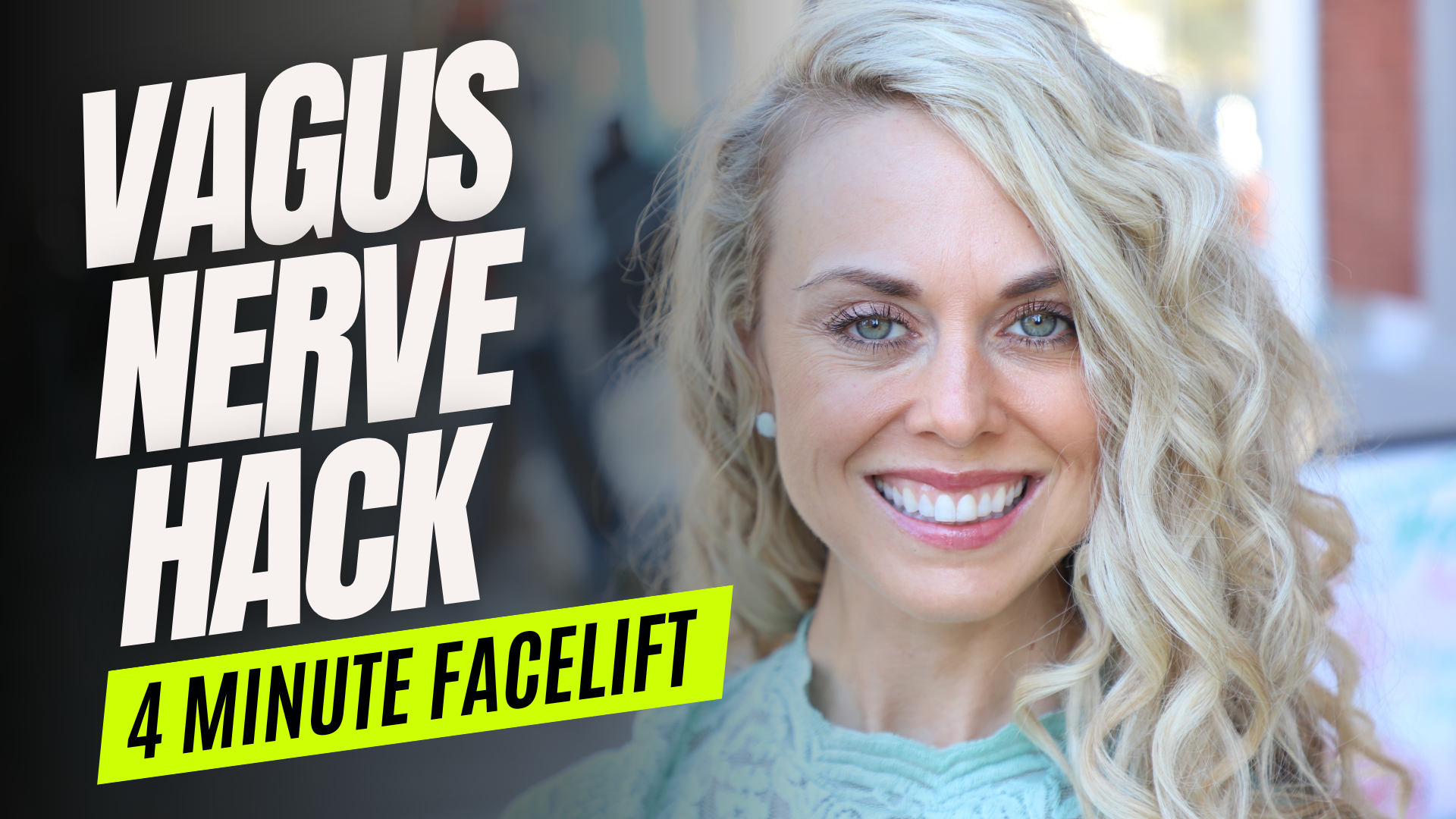Are you experiencing anxiety or chronic stress? Maybe you feel like it’s daunting to try to practice deep diaphragmatic breathing. Well, if that’s the case, I’m hoping that this technique will be very effective for you, bringing you from a state of fight or flight or even freeze to a state of social engagement where you can be calm, grounded, mindful, and connected.
Rather watch or listen?
Why consider the 4-minute facelift?
If you’re feeling like you are experiencing this chronic stress and anxiety where it just feels really hard to connect and move inward, then I would recommend this reset. It is a version of Stanley Rosenberg’s work but is a bit more expansive to bring you to a state of social engagement.
Our vagus nerve is 80% of our parasympathetic nervous system. However, we also want to consider our facial nerve, trigeminal nerve, and glossopharyngeal nerve, which are all involved in the expressions of our faces.
How to perform this exercise
We’re going to start by using either hand on either side of your face. Begin by placing one hand on each side of your face, just outside the nose. Press gently on the first layer of skin, feeling the tissue. Move the hands up and down, assessing resistance. Be gentle with your skin and tissue. Identify the area with more resistance and hold that position until you experience a sigh, swallow, yawn, or a combination, indicating relaxation of the nervous system.
Move to the inside of the eye, applying a little pressure. Move the hands up and down, finding resistance. Hold the position where resistance is felt until you experience a sigh, swallow, or yawn. Return to the starting position, going a bit deeper into the tissue. Move in a circular motion, identifying resistance and holding until the tissue softens or shows signs of relaxation.
Focus on one side of the face to observe the path and increased blood flow. Use the tongue on the roof of the mouth, moving through the alphabet to activate the glossopharyngeal nerve and enhance awareness in the tongue area.
Following that, perform an ear release by gently pulling back and down on the side of your ear. Feel the gentle pull towards the outside shoulder and await any signs of relaxation, like a sigh or yawn.
Combine all these steps on both sides of your face. Lastly, do the cheek lift for about 30 seconds. Bring your tongue to your nose, lift your cheeks, and turn your head. Hold for 30 seconds, and then bring it back to the center. This should create a relaxing yet invigorating feeling, a sense of presence.
This is a great way, as many of the other vagus nerve exercises are, to be able to use this sensory information to provide input to the brain, to be able to regulate our nervous system, and to bring us to a state of safety and connection.
Hopefully, you enjoy it as much as I did. And if this is not the right one for you, that’s okay too. There are so many options. Still please explore them and see your response, how you feel, and how you might be able to integrate that into your day.
If you found this information helpful, please be sure to give it a like, share it with others, leave a comment below, and, of course, subscribe to our YouTube channel, The Movement Paradigm®, for weekly tips on mindset, nutrition, and movement.
If you’re looking for personalized guidance on your journey and feel that you need an individualized approach, please don’t hesitate to reach out to us. We would welcome the opportunity to assist you.
If you’re interested in accessing a wide range of programs, including those on nutrition, somatics, and vagus nerve exercises, as well as movement programs to help you optimize your overall wellness, consider checking out our app, The Movement Paradigm, available on both Apple and Google platforms.
Other things that might interest you:

